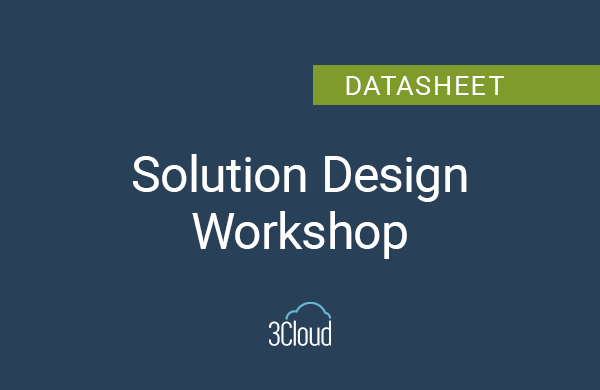Cloud computing is one of the most talked about trends in business, and for good reason. The cloud allows access to best-of-breed information technology solutions without the worry of up keep a large infrastructure. The cloud enables business leaders to drive innovation, achieve business objectives more quickly and efficiently, improve IT’s responsiveness while reducing costs.
While all-in cloud solutions are not the best-fit for every business, hybrid models are growing in popularity because they allow businesses to maintain control of some on premise infrastructure. The most common paradigms of cloud computing include IaaS, PaaS, and SaaS. In today’s blog, I will help to clarify the difference between these common cloud service models.
Infrastructure as a Service- IaaS
The infrastructure as a service model, or “IaaS”, replaces physical and virtual on-premise infrastructure with hardware residing in a public or private cloud while allowing users to remain in control over the environment. In this model, hardware upgrades, field maintenance, and other infrastructure worries are handled by the cloud provider while all software maintenance remains the responsibility of the customer. The true benefit of IaaS is the elimination of hardware costs and maintenance headaches. IaaS does not drastically change the operations of your business; it just allows you to operate on virtual machines instead of physical ones located in your basement. Instead, the machines are in someone else’s basement.
Platform as a Service- PaaS
Cloud computing through Platform as a Service, or “PaaS”, provides a fully managed platform that includes hardware, operating system and software ready for consumption. This model takes cloud computing one step further by tightly bundling all the components necessary to provide a specific platform in a fully managed environment. With PaaS, system configuration, application performance and scalability are fully managed by the cloud provider freeing users to focus on creating and deploying business solutions. The greatest benefit to PaaS is time-to-market. PaaS models allow an organization to collaborate, scale and deploy their own software at a much greater rate.
Software as a Service- SaaS
The final pillar of cloud computing is Software as a Service, or SaaS. Vendors use this model to provide users with applications and packaged software on a subscription basis from any internet-connected device. For these reasons, SaaS is commonly referred to as “on-demand” and removes the any concerns about installation, coding, or up-keep of data management. SaaS models eliminate the need for hardware and hand off all maintenance, upgrade and servicing responsibility to a third party, often drastically reducing IT overhead costs for an organization. Another main benefit to SaaS is the ability to only be charged for usage versus long-term purchase commitments. The only drawback with some SaaS vendors is the lack of control for customers. All responsibility is on the side of the service provider, but this also means that customers can’t easily look under the hood themselves when testing new processes or making adjustments.

Photo credit: https://blog.appliedis.com
Whether you choose a SaaS, PaaS or Iaas model, the transformative power of cloud allows users to increase scalability, security, and redundancy, often while reducing cost.

While there are a few arguments against cloud computing such as the lack of physical control over the environment, cloud has truly revolutionized the way IT departments manage and deploy infrastructure. Cloud computing reduces any barriers to technology enhancement, dependence on specialized personnel to manage new resources and even physical space to put on-premises storage. If you are interested in making the move to the cloud and would like to see which pillar of cloud computing works best for you, consult a cloud specialist here.
Citations:
Griffith, Eric. “What is Cloud Computing?” PCMAG. PCMAG.COM, 03 May 2016. Web. 09 Mar. 2017
“What is Cloud Computing? A Beginner’s Guide | Microsoft Azure.” A Beginner’s Guide | Microsoft Azure. Microsoft Azure, n.d. Web. 09 Mar. 2017.




